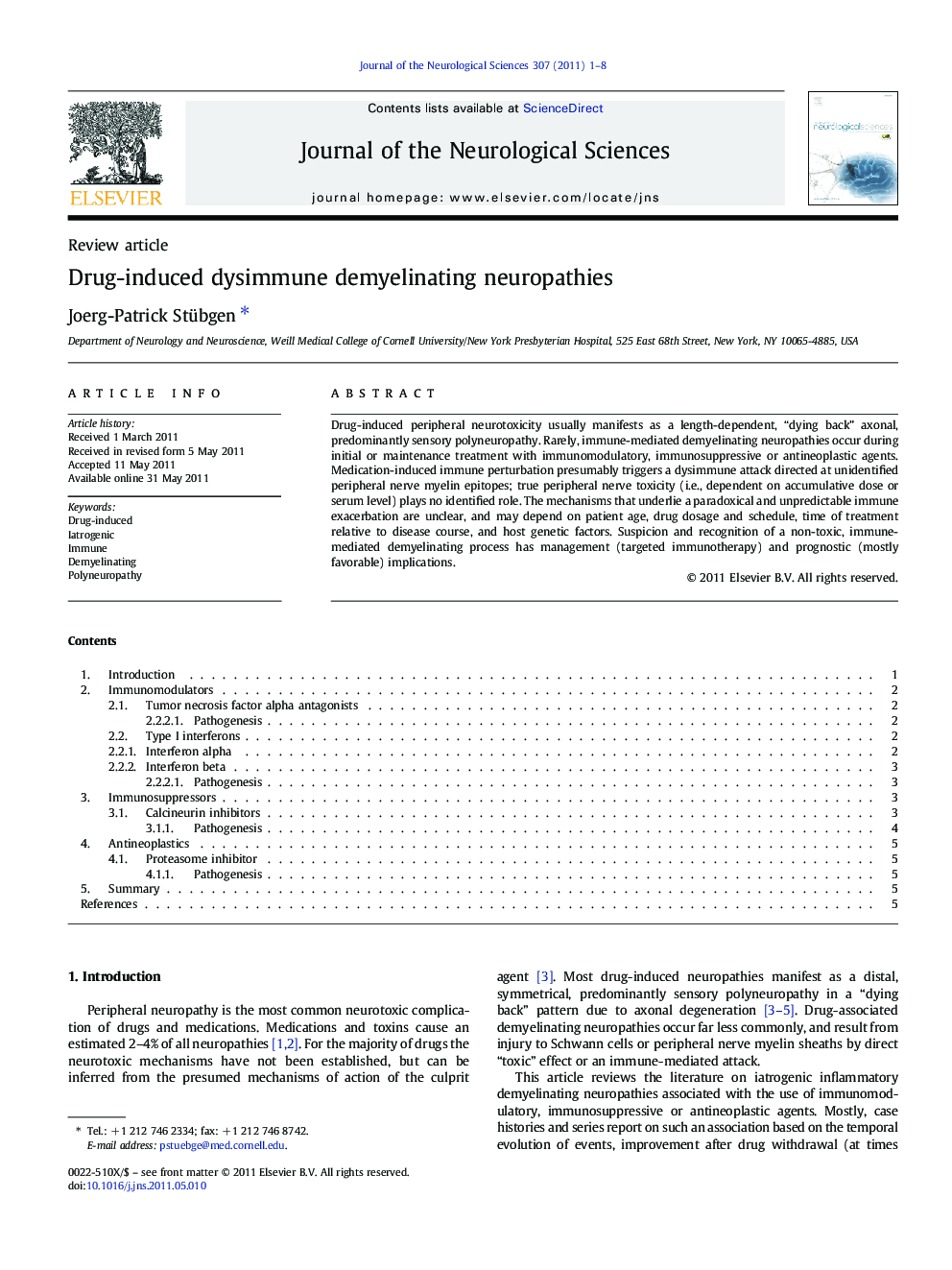| Article ID | Journal | Published Year | Pages | File Type |
|---|---|---|---|---|
| 8282374 | Journal of the Neurological Sciences | 2011 | 8 Pages |
Abstract
Drug-induced peripheral neurotoxicity usually manifests as a length-dependent, “dying back” axonal, predominantly sensory polyneuropathy. Rarely, immune-mediated demyelinating neuropathies occur during initial or maintenance treatment with immunomodulatory, immunosuppressive or antineoplastic agents. Medication-induced immune perturbation presumably triggers a dysimmune attack directed at unidentified peripheral nerve myelin epitopes; true peripheral nerve toxicity (i.e., dependent on accumulative dose or serum level) plays no identified role. The mechanisms that underlie a paradoxical and unpredictable immune exacerbation are unclear, and may depend on patient age, drug dosage and schedule, time of treatment relative to disease course, and host genetic factors. Suspicion and recognition of a non-toxic, immune-mediated demyelinating process has management (targeted immunotherapy) and prognostic (mostly favorable) implications.
Related Topics
Life Sciences
Biochemistry, Genetics and Molecular Biology
Ageing
Authors
Joerg-Patrick Stübgen,
